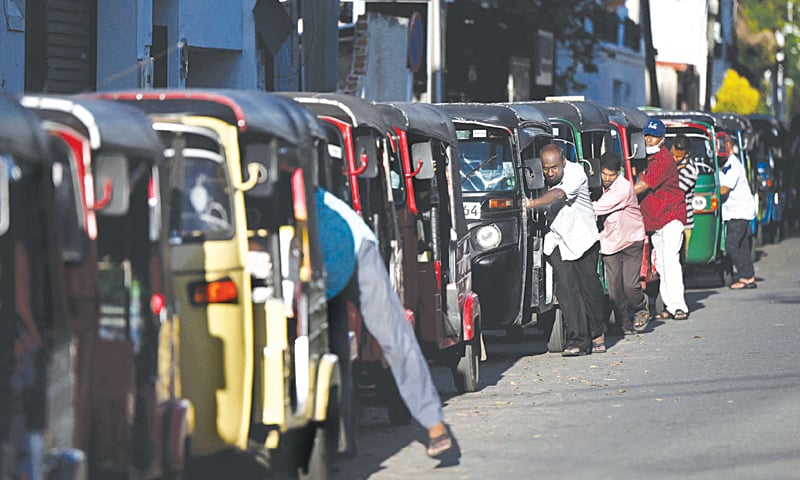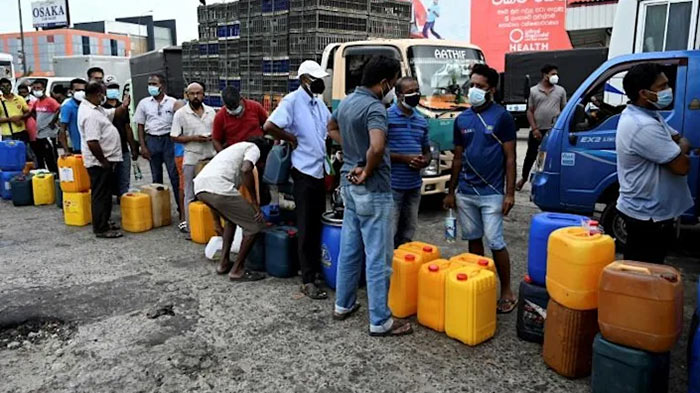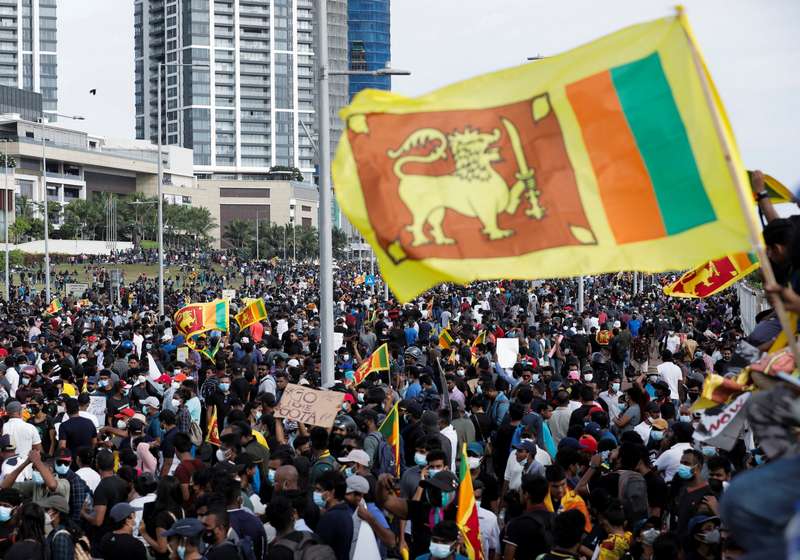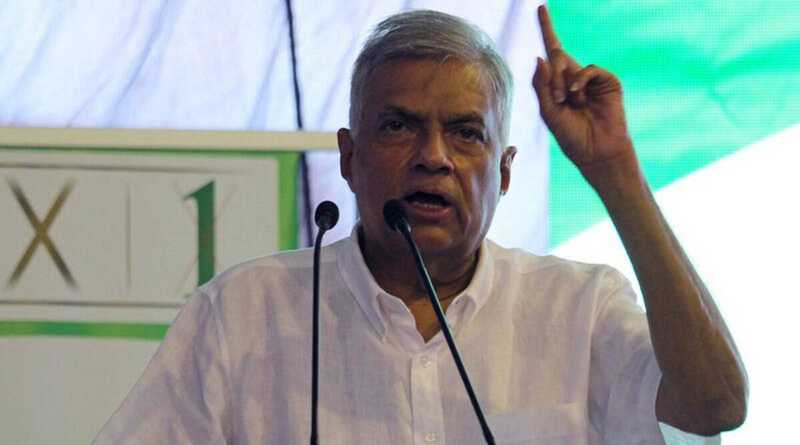

The past few years have been disastrous, and there is no word to describe what has happened in the past few months. Protesters have forced Prime Minister Mahinda Rajapaksa to resign and are asking his brother Gobayata Rajapaksa to step down as President.
Yesterday, the government announced that workers should work from home because there will be no fuel to take them to and from work. Citizens are not allowed to buy petroleum products, and electricity is hard to find. Even a warring Ukraine has not banned Ukrainians from buying fuel, and it is the first country to do so in over 50 years. Schools have closed down, and the prices of goods have gone up by over 40%. The nation will run out of food in September, and it does not have enough money to import food and medicines. Unfortunately, Sri Lanka will not be able to produce enough food in the farming season.
What caused the economic crisis, and how has the crisis affected the people of Sri Lanka?
CAUSES OF THE ECONOMIC CRISIS
Tax Cut
President Rajapaksa came into power with the promise to simplify tax. As attractive as that promise could be, it will be a disaster if there is no viable economic plan for the government to generate revenue.
President Gotabaya Rajapaksa abolished the Pay As You Earn (PAYE) and the 2% nation-building tax. The government reduced VAT and other forms of taxation. The tax cut led to an almost 35% decline in registered taxpayers. Was the government aware of the consequences of its action?
In March 2021, Secretary to the President, P.B Jayasundera, said President Rajapaksa was aware that this new policy would lead to a loss in revenue.
“The President promised this nation a new taxation strategy. He knew the revenue will be lost but he considers that lost revenue as an investment in the country,” Jayasundera said.
“Therefore, outdated archaic taxes have been given up. Singe rate VAT has been introduced. A new corporate structure has been introduced,” he added. One year later, the plan has become a mess.
One would think the government will come up with strategic economic plans. Unfortunately, there was no such plan, and money printing became the new financial plan.
Money Creation
According to Newswire, “Sri Lanka Central bank printed 119.08 billion rupees on [April 6],” which “was the highest reported amount printed in a single day during the year. The total amount added to the Sri Lankan financial market this year (2022) increased to Rs. 432.76 billion.”
Because of the inability of the government to generate income from tax, money creation became one of the few ways for the government to generate revenue. Despite warnings from the IMF and other financial bodies, Sri Lanka continued to print more money. Has the money printing stopped? Absolutely not.
According to the BBC, recently appointed “Prime Minister Ranil Wickremesinghe has said the government is now so short of funds that it will be printing money to pay employees’ salaries.”
The Minister said this path would lead to more inflation in the country.
It appears that the government has not lived past the printing of money. As long as money printing remains the only option, the end of the economic crisis is still far away.
Foreign Debt
Sri Lanka is not the most indebted nation in the world. However, it is arguably the most affected by debt. Sri Lanka has fallen into the China debt trap, which many African countries have also fallen into without knowing.
Most of the loans were for projects now described as white elephant projects. According to lawmaker Kabir Hashim as reported by abc News, “Foreign loans “built highways, airports and convention halls in the jungles which didn’t give any returns” in foreign currency, said a lawmaker, Kabir Hashim. “Now we don’t have the dollars to pay them back the dollar loans.”
One example was the Chinese-built Hambantota port. Hambantota is President’s Gotabaya Rajapaksa and former Prime Minister Mahinda Rajapaksa’s hometown. The port was funded by a Chinese loan worth $1.1bn despite sincere efforts to block the project. Today, the port has not generated any money, but the debts have generated interest.
Recently, Sri Lanka has borrowed money to pay some of its debts. What has been the result of the unnecessary borrowings?
The Sri Lankan government has gladly borrowed approximately $51bn. In May, for the first time in the country’s history, it failed to service its external debts. $6.5bn of this debt is from China. Both countries are currently renegotiating the loan conditions. However, experts have argued that China would not cancel the debt because doing so will mean it will also cancel debts by other countries.
Recently, the country said it has only $50 million, which is nowhere near its debt obligation. Sri Lanka is now seeking help from other countries and international organizations to help save the country from an imminent total collapse.
Fall in Tourism
Tourism contributes as much as 10% to the Sri Lankan economy. All that changed in April 2019 when suspected Islamic terrorists bombed several locations in the country, including Churches and hotels. A total of 269 people died, including 45 foreigners. Over 500 people were also injured.
In 2018, the Sri Lankan government got about $4.4bn from tourism, which was almost 6% of the country’s GDP. However, that figure fell significantly in 2020, a year after the bombings. That year, tourism contributed as little as 0.8% to the country’s GDP, and with the Covid restrictions that soon followed, the country’s earnings from tourism are now near zero.
Russia-Ukraine War
Every fragile economy in the world has been affected by the ongoing Ukraine-Russia war. Sri Lanka’s biggest tea market is Russia. Since the war began, the country has not been able to sustain trade with the Kremlin. As a result, the tea sector has crumbled alongside the tourism sector.
Agricultural Crises
Sri Lanka was one of the few countries that are self-sufficient in rice production. However, in April 2021, President Rajapaksa announced that the government would no longer allow organic farming. The President banned inorganic fertilizers and insecticides. This single move affected tea and rice production.
Rice production fell by 20%, causing the once self-sufficient country to import rice worth $450million. The government has since abandoned the proposed organic farming after its failure and protests from citizens.
According to ColomboPage, “The Minister of Agriculture Mahinda Amaraweera said the government has not yet brought fertilizer to give to the farmers for the Yala season cultivation, and he does not believe that it was possible to provide fertilizer for the Yala season. The Minister said only a 50 percent of the maximum harvest could be expected during the Yala season and in reality, working hard to cultivate in the Yala season will be fruitless.”
The implication is that the country would only be able to produce half of what it had produced previously. Unfortunately, the country’s rice stock can only last till September this year. No wonder Sri-Lankans want Mahinda Rajapaksa out of the government house.
EFFECTS OF THE ECONOMIC CRISIS
If there is one country you would not like to visit at the moment, it is Sri Lanka. It is one country where you can no longer buy fuel. It is experiencing the worse crisis in over 70 years. The following are some side effects of the Sri Lankan economic crisis.
Fuel Shortage
Just yesterday, the government suspended the sale of fuel to non-essential users. According to the BBC, “For the next two weeks, only buses, trains and vehicles used for medical services and transporting food will be allowed to fill up with fuel.”
The minister for power and energy, Kanchana Wijesekera, said the government is working hard to get fuel supplies.
“We are doing everything we can to get new stocks, but we don’t know when that will be,” Kanchana Wijesekera said on Sunday.
Last month, the government ordered the military to control queues for fuel. So far, four people have died from either fatigue or violence. The situation might get worse in the coming days unless a miracle happens.
Unending Protests
Sri Lankans seem to be aware of those that caused the economic woes. Until May, Sri Lanka’s President was Gotabaya Rajapaksa, while the Prime Minister was his Mahinda Rajapaksa. The financial crisis began or worsened under the watch of the two brothers. They made policies that were unfavorable to the economy.
Protests have forced Mahinda Rajapaksa to resign as Prime Minister, but Sri Lankans are not satisfied. They want Gotabaya Rajapaksa to also leave as President. Although the protests have reduced, ordinary Sri Lankans do not want to see any Rajapaksa near power.
Closing Down of Schools
As of yesterday, all schools in urban areas have closed down. The shortage of fuel could be one of the reasons. In March, the schools postponed their tests because of the unavailability of printing papers.
Health
Hospitals in Sri Lanka no longer have life-saving medicines. Officials have warned that if nothing is done about the situation, the country could record massive deaths that are worst than deaths recorded from the Coronavirus.
Inflation
The prices of goods have gone up by over 40% in 2022 alone. There is no sign that this will slow down as the government has admitted that the tax cut was a mistake. That means the government will increase taxes, which will cause more inflation.
The government has not stopped printing money as there is almost no alternative. The scarcity of goods and services, coupled with the current monetary policies might further increase the prices of goods.
INTERNATIONAL ASSISTANCE
Everyone is scared to assist Sri Lanka because time and again, the government has failed to clean up its mess. However, there is a measure of hope for the country.
This week, top officials of the U.S visited Sri Lanka. The U.S ambassador to Sri Lanka said the “visit underscores [U.S] ongoing commitment to the security and prosperity of the Sri Lankan people.”
She described the financial crisis as one of the “greatest economic challenges in their history.”
“Our efforts to support economic growth and strengthen democratic institutions have never been more critical,” she added.
According to PBS, “The U.S. has announced $120 million in new financing for small and medium-sized businesses, a $27 million contribution to Sri Lanka’s dairy industry, and $5.75 million in humanitarian assistance to help those hit hardest by the economic crisis. Another $6 million was committed in new grants for livelihoods and technical assistance on financial reform.”
The IMF is also in talks with the Sri-Lankan government. The IMF might provide a bail-out fund for the country. A conclusion is yet to be reached on the matter. However, one sure thing is that Sri Lankans’ survival depends on the help they would get from the international community.





0 Comments